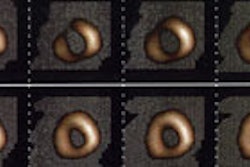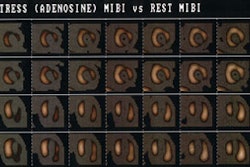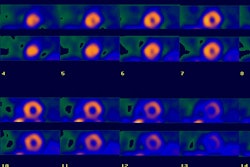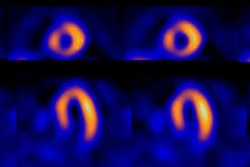J Nucl Med 2001 Jul;42(7):1062-76
Cardiac neurotransmission imaging.
Carrio I.
Cardiac neurotransmission imaging with SPECT and PET allows in vivo assessment
of presynaptic reuptake and neurotransmitter storage as well as of regional
distribution and activity of postsynaptic receptors. In this way, the
biochemical processes that occur during neurotransmission can be investigated in
vivo at a micromolar level using radiolabeled neurotransmitters and receptor
ligands. SPECT and PET of cardiac neurotransmission characterize myocardial
neuronal function in primary cardioneuropathies, in which the heart has no
significant structural abnormality, and in secondary cardioneuropathies caused
by the metabolic and functional changes that take place in different diseases of
the heart. In patients with heart failure, the assessment of sympathetic
activity has important prognostic implications and will result in better therapy
and outcome. In diabetic patients, scintigraphic techniques allow the detection
of autonomic neuropathy in early stages of the disease. In conditions with a
risk of sudden death, such as idiopathic ventricular tachycardia and
arrhythmogenic right ventricular cardiomyopathy, PET and SPECT reveal altered
neuronal function when no other structural abnormality is seen. In patients with
ischemic heart disease, heart transplantation, drug-induced cardiotoxicity, and
dysautonomias, assessment of neuronal function can help characterize the disease
and improve prognostic stratification. Future directions include the development
of tracers for new types of receptors, the targeting of second messenger
molecules, and the early assessment of cardiac neurotransmission in genetically
predisposed subjects for prevention and early treatment of heart failure.



